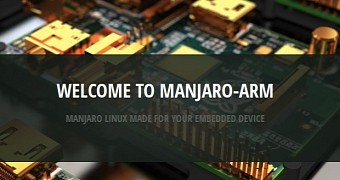The Manjaro community is proud to announce the first production-ready version of the Manjaro ARM operating system, a specially crafted Manjaro Linux flavor for ARM devices, such as the popular Raspberry Pi boards.
After having it in development for the past three months, the Manjaro ARM development team led by Dodge JCR has released the Manjaro ARM 16.05 operating system for Raspberry Pi 2 single-board computers, based, of course, on the unofficial Arch Linux for ARM project.
As you might have already guessed, the main design goal of the Manjaro ARM project is to offer a complete port of the Manjaro Linux operating system to embedded devices and single-board computers, thus planning on conquering the ARM ecosystem.
Manjaro ARM 16.05 ships today as the first stable release of the project, offering binary images in the .img format for Raspberry Pi 2 SBCs, which users can install on any GNU/Linux, Mac OS X, or Microsoft Windows operating systems, with major new features, including a new rootfs and keyrings installed/configured by default.
"Not much has changed on the surface for the end users. However, we have spent a great amount of time switching the way things are handled in the backend so that building and maintaining is both easier and less time consuming on our part," Dodge JCR, the maintainer of Manjaro ARM, says.
Raspberry Pi 3 support in the works
As mentioned before, Manjaro ARM 16.05 has been thoroughly tested only for Raspberry Pi 2 single-board computers, but the development team is already working hard on bringing support for more popular developer boards, including the powerful Raspberry Pi 3 one that features built-in Wi-Fi and Bluetooth support.
Among other ARM boards that might be compatible with Manjaro ARM in the near feature are Odroid XU4, Odroid C1+, Beagleboard XM, Beaglebone Black, Banana Pi, and the first-generation Raspberry Pi devices. In the meantime, you can download Manjaro ARM 16.05 Minimal Edition right now from the project's forums, where you'll also find detailed installation instructions.

 14 DAY TRIAL //
14 DAY TRIAL //